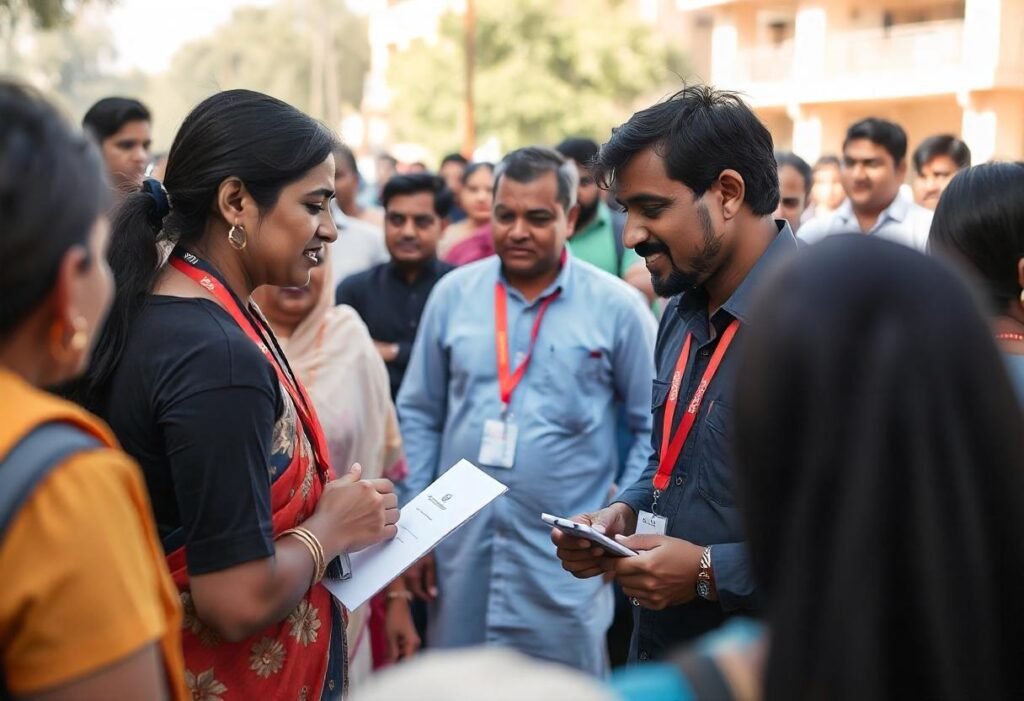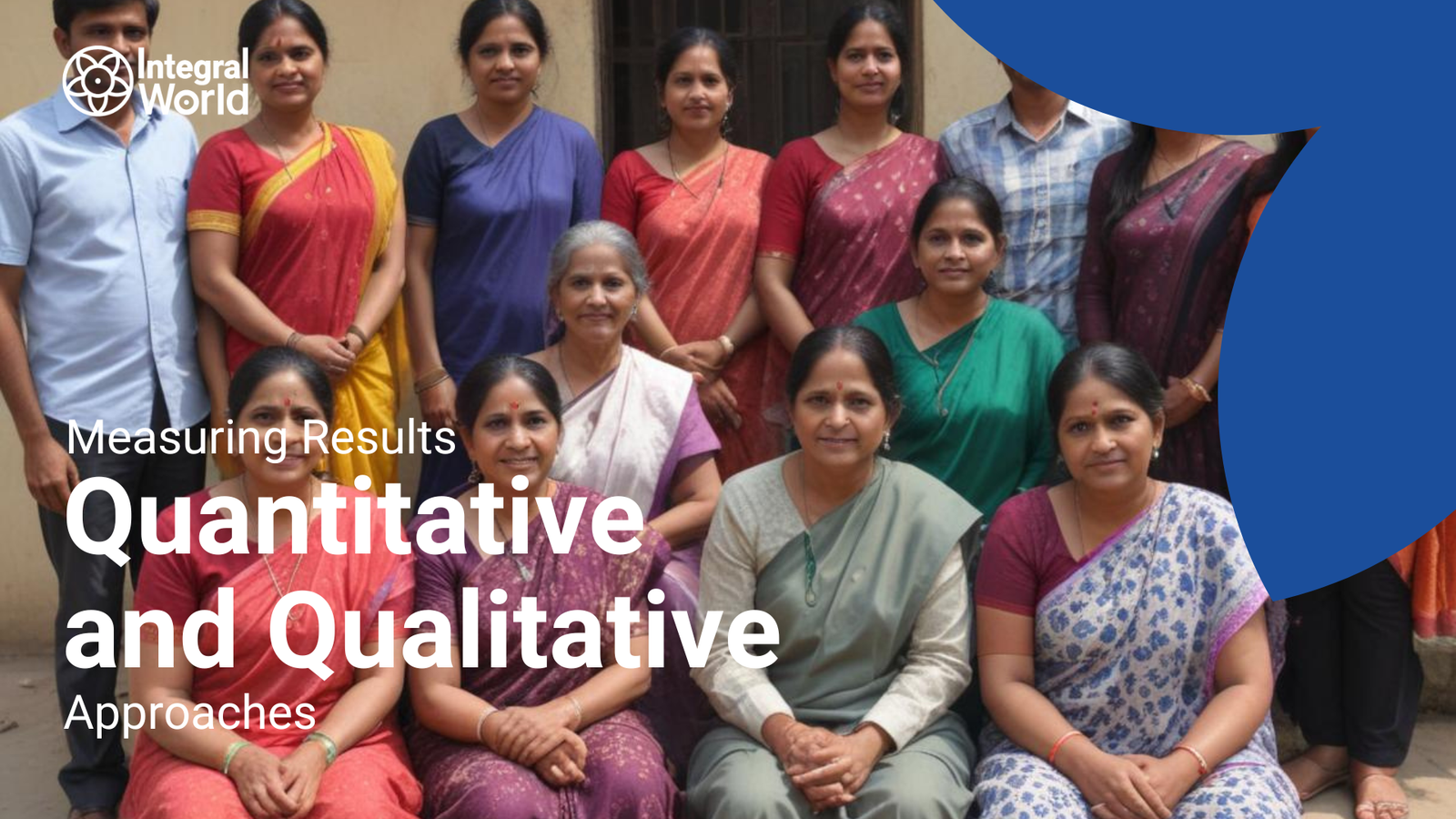Any agency dedicated to sustainable development requires an understanding of the impact of their development projects. One way to ensure that organizations are addressing key issues, meeting community needs, and driving meaningful progress is by measuring results accurately. The paper will provide a deeper look at both quantitative and qualitative approaches in measuring results through step-by-step guidance, case studies as well as expert insights. Integral World argues that a balanced approach to evaluation can assist agencies in better understanding their impact and refining strategies for greater effectiveness.
Quantitative Approaches to Measuring Results
Quantitative approaches entail using numerical data to measure and analyze the outcomes of development initiatives. These techniques are often deemed more objective hence it is easier to have clear indicators that can be measured for success.
Step-by-Step Guidance for Measuring Qualitative Results
Set Specific Goals: Begin with clearly defining the goals for your initiative – What exactly do you want to achieve? It is important that these objectives meet the criteria of SMART (Specific, Measurable, Achievable, Relevant & Time-bound).
Identify Key Performance Indicators (KPIs): Identify what metrics you will use to track progress towards your objectives. KPIs should be specifically tied to your goals and produce measurable information.
Collect Data: Get information using questionnaires and other survey tools. You must ensure that your method of data collection is trustworthy as well as consistent.
Analyze Data: Utilize statistical tools and software packages in order to analyze the data. Look out for trends, patterns or correlations which might give some insight into how effective your initiatives have been.
Report Findings: Present findings clearly and simply; graphs/charts/tables make data intelligible; highlight key findings/recommendations;
Case Study: Improving Literacy Rates

An NGO wanted to improve literacy rates among people in rural areas. They aimed to achieve a minimum 20% increase in literacy rates within two years through their focused efforts and initiatives. Key performance indicators (KPIs) included the number of children enrolled in literacy programs, attendance rates, and test scores. Data was collected using standardized tests and enrollment records. The analysis revealed that there was a 25% increase in literacy rates which showed that their initiative was successful.
Expert Quote
“Quantitative measurement provides a clear and objective way to assess the impact of development initiatives. By focusing on measurable outcomes, organizations can track their progress and make data-driven decisions.” – Dr. Jane Smith, Development Economist
Qualitative Approaches to Measuring Results
Qualitative approaches involve using non-numerical data to understand about broader impacts of development initiatives on people’s lives. These methods mainly focus on experiences, perceptions and stories of those participating.
Step-by-Step Guidance for Measuring Qualitative Results
Define Research Questions: Begin by defining the research questions that will guide your qualitative study. These queries are supposed to enable you have an understanding of the deeper consequences of your actions.
Select Data Collection Methods: Choose appropriate methods for collecting qualitative data, such as interviews, focus groups, and observations. You will need to decide which techniques would give you enough information about your research questions.
Collect Data: Conduct interviews, focus groups and observations ensuring that participants feel safe enough to share their experiences from varying perspectives.
Analyze Data: In this analysis approach is more important than overall testing as one must extract key themes or commonalities within responses; “themes or patterns” are taken into account as well as insights leading to better understanding how these projects affect different population groups;
Report Findings: Present findings through story-telling including quotations that highlight thematic ideas; bring out broad application as well as offering suggestions;
Expert Quote
“Through qualitative measurement, we get to understand development on the human side. By going behind those involved and hearing their stories, we can know more about what our projects are doing.” – Dr. Sarah Johnson, Social Anthropologist
Integration of Quantitative and Qualitative Approaches

A balanced approach incorporates both quantitative and qualitative methods into measurement. This helps one get an objective understanding of what it means for development initiatives while at the same time providing rich insights within their context.
Step-by-Step Guidance for Integrated Measurement
Merge Objectives with Research Questions: Clearly specify both your quantitative objectives and qualitative research questions ensuring that they are congruent with each other.
Use Mixed Methods for Data Collection: Mix surveys or questionnaires with interviews or focus groups. This approach collects both numerical and narrative data.
Analyze Data Holistically: Look for commonalities between qualitative and quantitative information so as one type may greatly inspire another during analysis activities.
Present Integrated Findings: Tell your story using numbers but highlight both outcomes that are measurable as well as broader impacts shown in stories.
Expert Quote
“Integrating quantitative and qualitative approaches provides a holistic view of development impact. By combining objective data with human stories, we can gain a richer and more nuanced understanding of our initiatives.” – Dr. Michael Lee, Development Researcher
Actionable Tips for Organizations
Define Clear Objectives and Research Questions: Begin by stating what your purpose is in very clear terms. Be sure to have them correspond to each other.
Use Mixed Methods for Data Collection: Use both quantitative and qualitative methods to get different kinds of data that provide you with an inclusive comprehension of your activities.
Invest in Training: Make sure that your employees are trained on how to collect both types of data-their qualitative as well as their quantitative measures; funding training programs might be considered.
Use Technology: Collecting as well as analyzing information using technology; these may include using software for qualitative analysis or analytics tools for quantifiable information respectively.
Communicate Findings Effectively: Lay out your data using visualizations, quotes, and stories that make sense to the reader who is not in this field.
Emphasizing Integral World’s Proficiency
Integral world is a company that helps organizations measure and understand the effects of their developmental programs. Our capabilities in both quantitative and qualitative techniques allow us to provide all-inclusive evaluation services as per our client needs.
Conclusion
Evaluating the effects of development programs is essential for advancing change and making sure that organizations are meeting the needs of their communities. In addition, if companies use a blend of quantitative and qualitative methods, they will have a well-rounded picture of their performance hence can make better choices. Integral World’s staffs assist organizations to make appropriate decisions during this process by offering counsel as well as necessary support in gauging impacts.
Are you prepared for advanced impact assessment? Come to us at Integral World where we have the expertise in quantitative and qualitative analysis. Reach out to us today to discover additional details on our services or how we may help you reach your developmental objectives.


2 Comments
Thanks forr your personal marvelous posting!
I certainly enjoyed reading it, you willl bbe a great author.
I will be sure to bookmark your blog and definitely will coome back
sometime soon. Iwant to encourage that you continue your great writing,
have a nice evening! https://To-Portal.com/read-blog/15866
Technoob I do not even understand how I ended up here, but I assumed this publish used to be great
Comments are closed for this article!